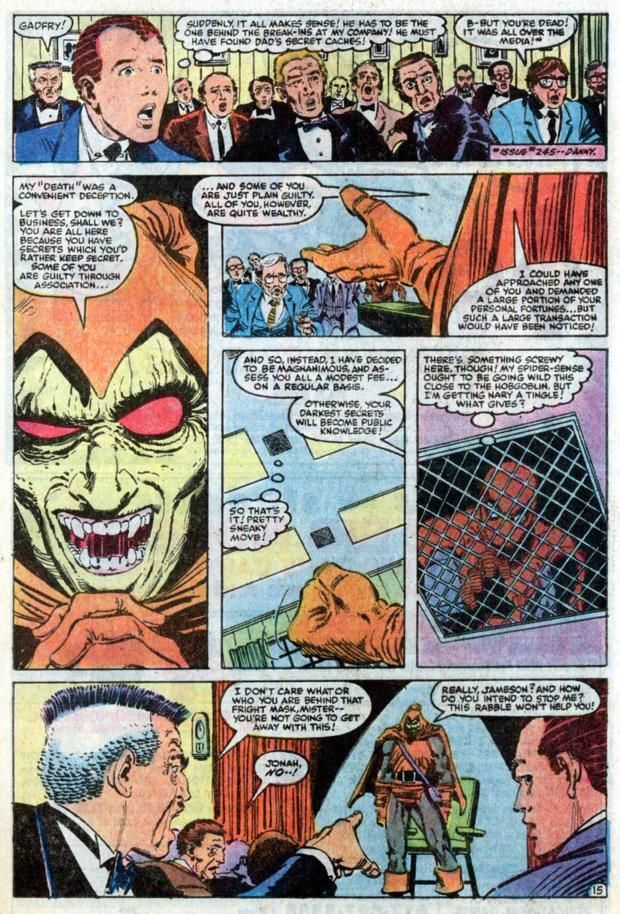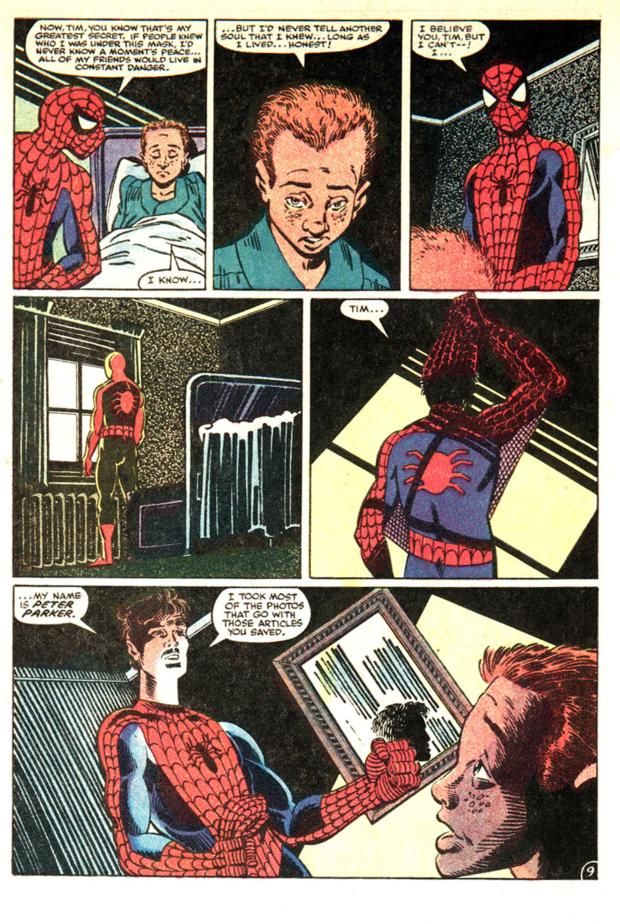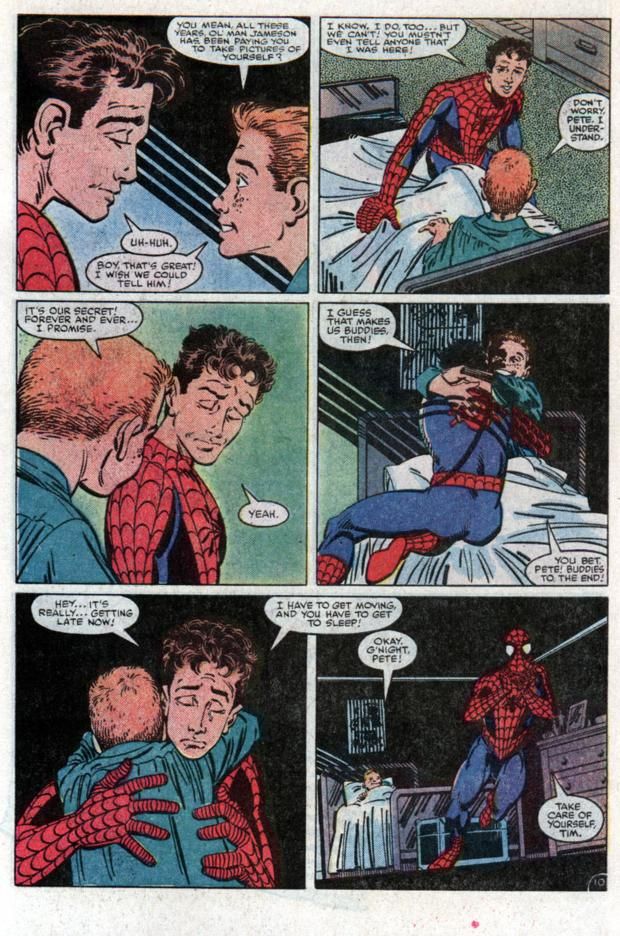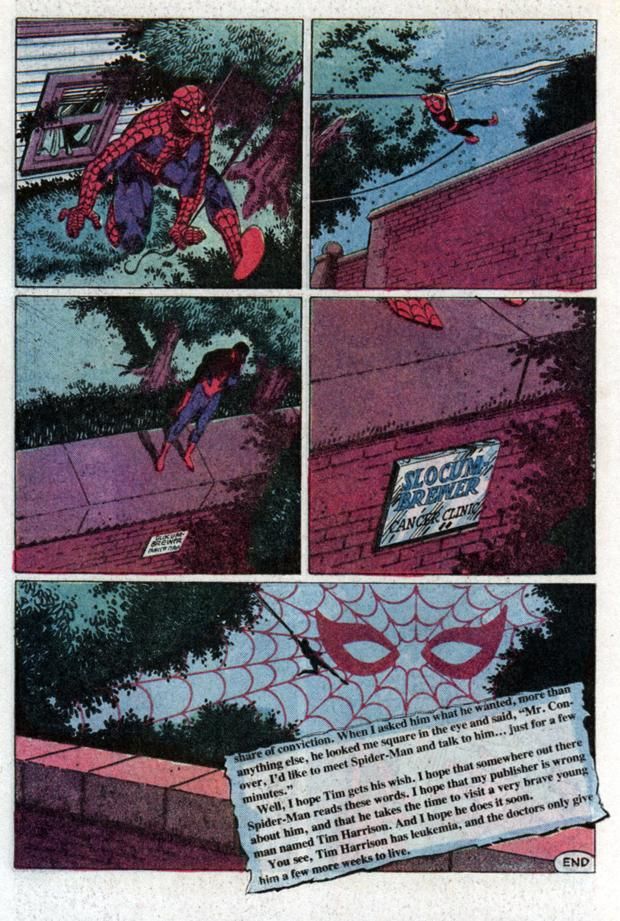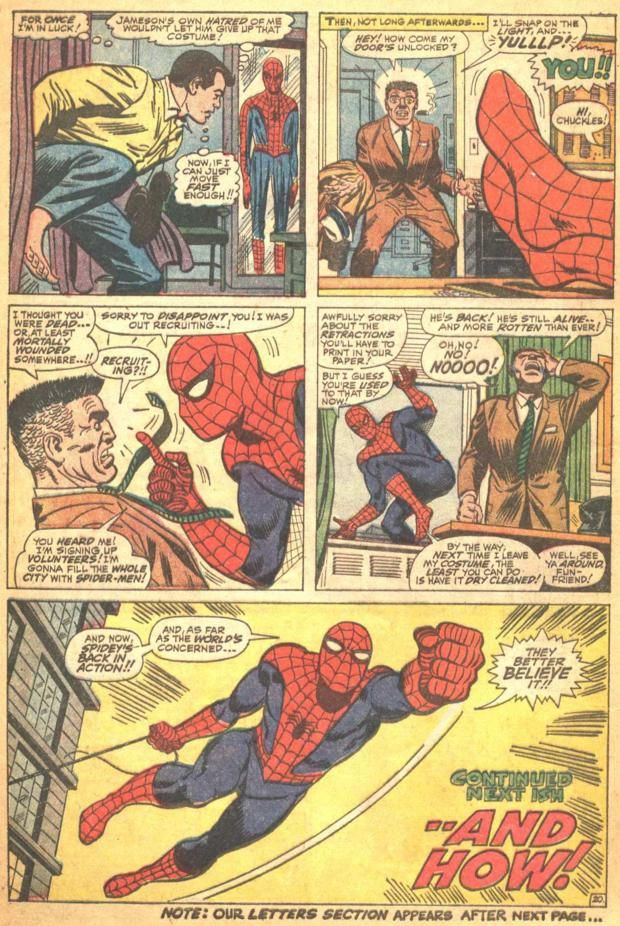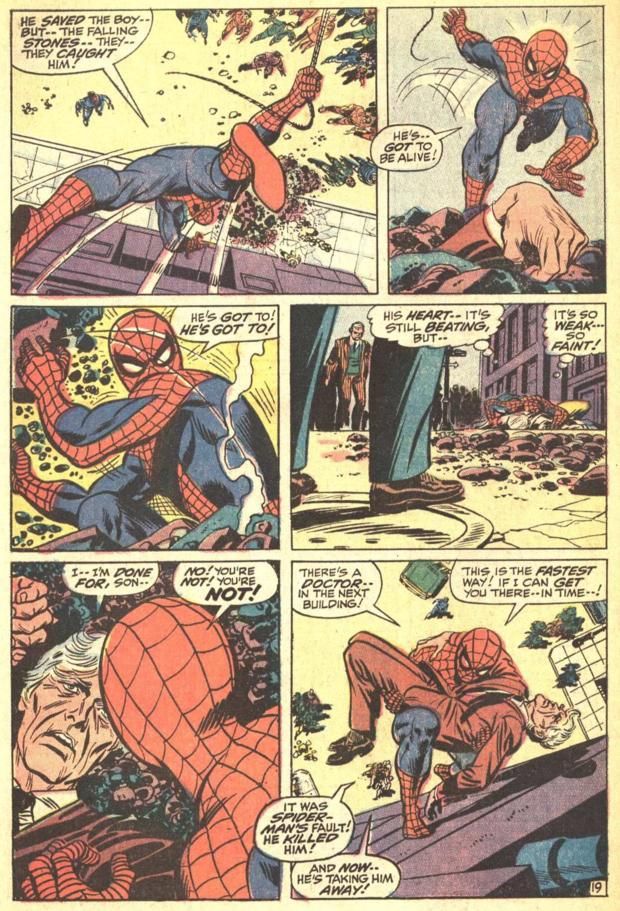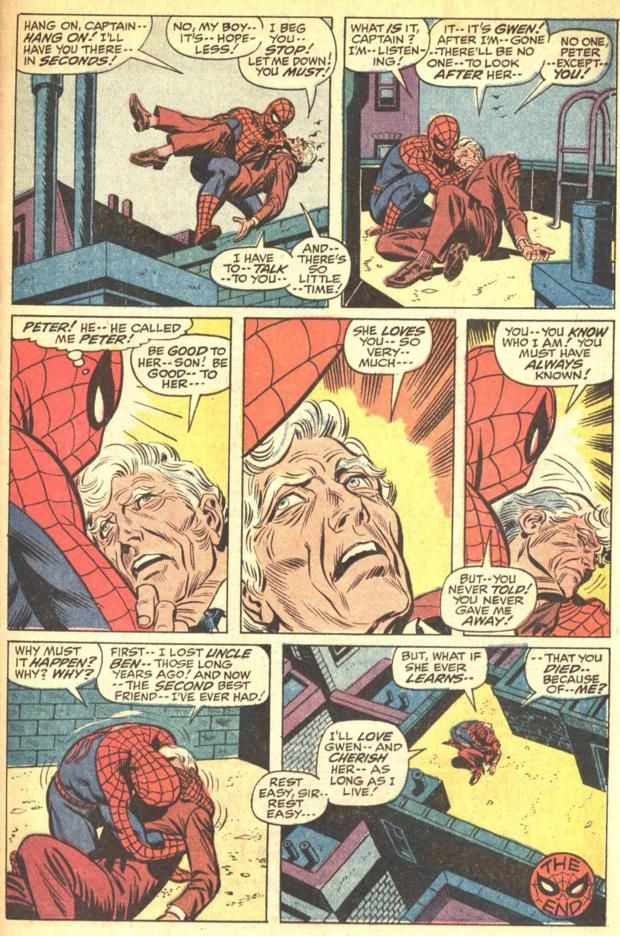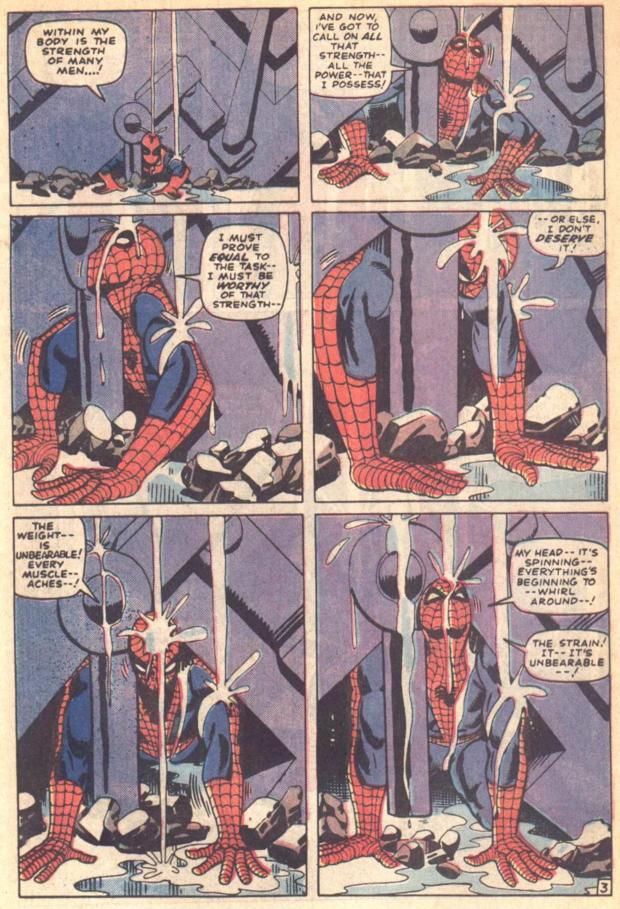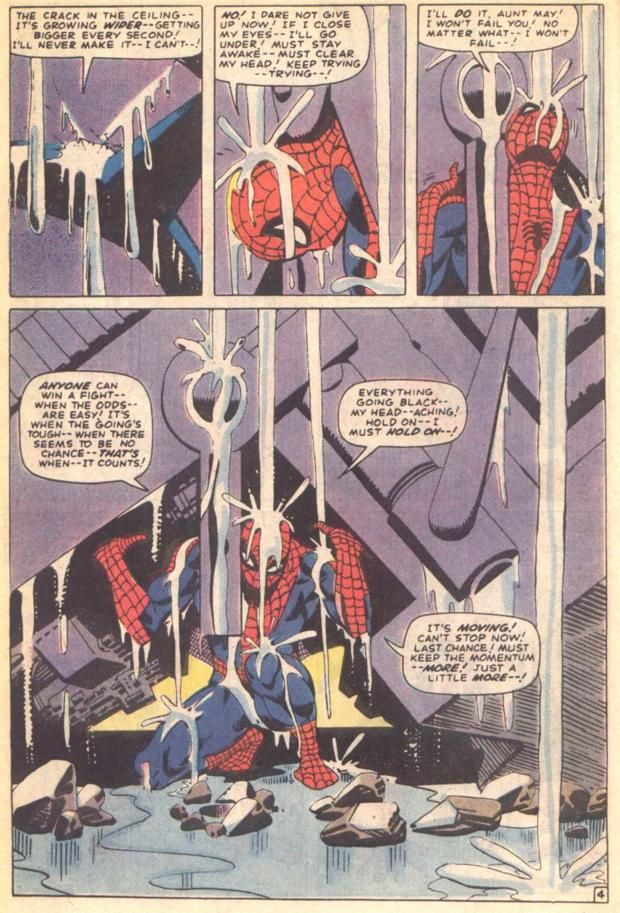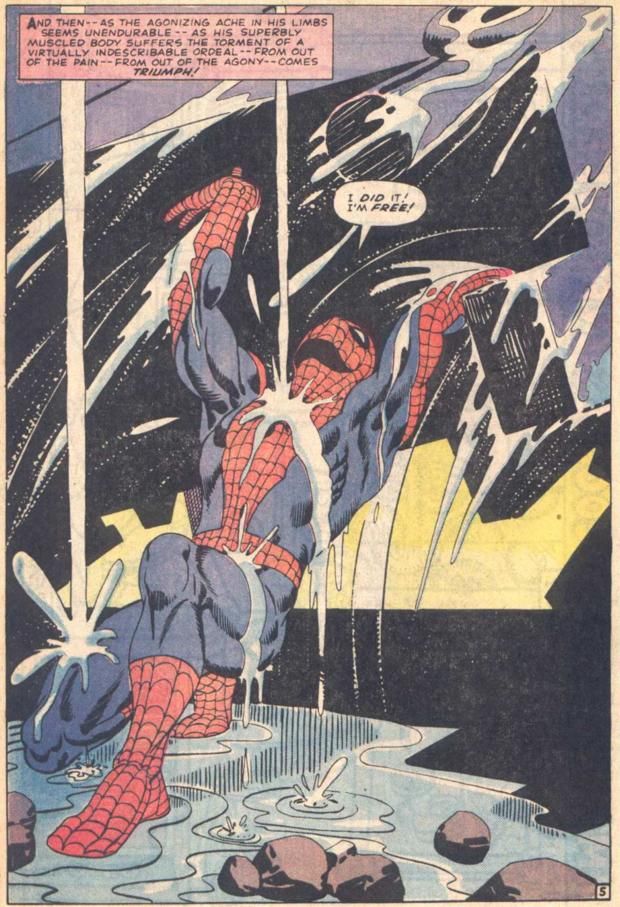In honor of the fiftieth anniversary of Spider-Man, we're doing four straight months of polls having to do with Spider-Man, culminating with the release of the Amazing Spider-Man film in July. The last installment will deal with Spider-Man stories, but this month will be about Spider-Man's writers and artists.
You all voted, now here are the results! Here is a master list of all the creators listed so far. We continue with Spider-Man writers #3-1...
Enjoy!
3. Roger Stern
A funny thing about Roger Stern's legendary run on Amazing Spider-Man is the fact that it followed an eighteen issue run on Spectacular Spider-Man! Heck, Stern even introduced Roderick Kingsley (the man he had planned as as the secret identity of the Hobgoblin) in the pages of that run! The run (which went from Spectacular Spider-Man #43-61) was an important part of Stern's overall Spider-Man work, as a lot of plots he began in Spectacular carried over to Amazing Spider-Man.
That said, when Stern took over Amazing Spider-Man with Amazing Spider-Man #224, he clearly turned his work on to a whole other level. There was a clear change in how he wrote the "secondary" Spider-Man title and how he wrote the "main" title, as he was now in the driving seat for the Spider-Man books as a whole and he was a great driver.
Stern's early issues re-introduced the Black Cat into the Spider-books, where he helped to make her the staple of the Spider-Man books she remains today. An interesting aspect of Stern's books, also, is after a number of writers who tended to downplay Spider-Man's powers, Stern went the other direction, highlighting just how powerful Spider-Man can be.
One of the most acclaimed issues in Stern's run came early on when he had Spider-Man fight against the unstoppable Juggernaut in a two-issue story that did not CREATE the "superhero battles against a much more powerful foe," but certainly put a twist on the theme that later writers have followed frequently.
Stern brought Mary Jane Watson back into the Spider-books and did good work with Spider-Man's supporting cast.
Stern also introduced the Hobgoblin, a mysterious new villain who used the Green Goblin's devices and serum to become a powerful crime boss. The Hobgoblin was not just interesting because of the mystery of his identity, but also because of his off-beat approach to villainy. He was no mad man, he was a businessman and he used what he learned from Osborn's in ingenious ways...
Even as his run came to a close with Amazing Spider-Man #250, Stern plotted two more issues of Amazing for incoming writer, Tom DeFalco, and one of them was the story of the alien costume in #252.
Perhaps Stern's most famous story was a short story in Amazing Spider-Man #248, the tale of a young boy who we learn in a newspaper story is "The Boy Who Collected Spider-Man," Spider-Man's biggest fan (skip to #2 on the list if you haven't read this story before)...
Stern has returned to the Spider-books a few times since he left, including a mini-series where he revealed who the Hobgoblin REALLY was. Plus, he did a few issues during Brand New Day, including a cool sequel to Spider-Man/Juggernaut with Spidey taking on Juggernaut possessed by Captain Universe!!
2. Stan Lee
Since John Romita has penciled the vast majority of Stan Lee's post-Steve Ditko Spider-Man comic books, you could easily make a case that this could be a Stan Lee/John Romita joint credit, since eventually Romita took a much more involved role in plotting the title. Heck, Romita himself has noted that he could have easily gotten a co-plotter credit if he had asked for one. However, one of the reasons Romita has given for NOT asking for one is that it never got to the point where Romita would be coming up with the plots for the issues without consulting with Lee the way Ditko eventually did in the Ditko/Lee issues of Amazing Spider-Man. Lee always gave Romita SOME sort of plot, even if said plot likely became vaguer and vaguer the more that the two men worked together. Romita never had the control over the stories that Ditko had. So that's why this listing is for Stan Lee by himself. If you want to think of it as Stan Lee/John Romita, though, fair enough.
Anyhow, Stan Lee began the post-Ditko era with Amazing Spider-Man #39 and he stayed on the title until #100 and then returned for a short engagement from #105-110. Then he left the book more or less for good (he has returned for a few stories here and there, including a 1997 Spider-Man/Kingpin graphic novel with John Romita and Tom DeFalco assisting on the script).
The major changes that Lee made when Ditko left was giving the title a bit more warmth. You could almost see in the early issues of Spider-Man that when there was a rare happy ending, Lee would even specifically comment on it. "See! A happy ending for once!" When Ditko left, the supporting cast (which had not settled since #1 with the exceptions of Aunt May and J. Jonah Jameson) solidified. Suddenly, Harry Osborn was no longer a jerk to Peter. He was now his best friend. Suddenly, Gwen Stacy's feelings toward Peter smoothed over and she was totally into him. A regular teen hangout was introduced and the interactions of the main young characters in the book being a centerpiece of the title (it was not that young people were not always involved in the book, but it was not until this time that the supporting cast was able to solidify and become the driving force of the book). And, of course, Mary Jane Watson finally made her appearance.
That the book was warmer and more youth-driven does not mean that Lee eased up on the angst, of course. No sirree. He piled on the angst, from the initial story arc with Romita (where the Green Goblin is revealed to be the father of Peter's college classmate, Harry Osborn and the Goblin knows Spider-Man's identity!!!) to the classic Spider-Man #50, where Spider-Man dramatically quits being Spider-Man. However, after saving a security guard as Peter Parker, he realizes his mistake...
Good stuff.
More drama continued as Lee examined topical situations, like college protests and drug addiction, to great effect. Of course, Spider-Man also was visited with tragedy as the father of his girlfriend Gwen, Captain Stacy, sacrifices himself to save a child from wreckage caused by a battle between Spider-Man and Doctor Octopus. As Stacy dies, he reveals that he knew Peter was Spider-Man.
Awesome.
Post-Ditko was not as great of a time for new characters as Lee chose to spend more time developing the established ones, but there were a few notable additions to the Spider-books, like the aforementioned Mary Jane Watson, the criminal mastermind the Kingpin, the Daily Bugle's noble City Editor, Joe "Robbie" Robertson (one of the first prominent black supporting characters in the Silver Age), the Shocker, the Prowler...just to name a few of the more prominent examples.
Lee's work from #39-100 helped take Spider-Man from already one of the most popular Marvel characters to being THE most popular Marvel character, hands down, as the novel approach of "Topical teen soap opera with good looking teens and a ton of action" was extremely popular. This run really became the blueprint for most Spider-Man runs to follow.
1. Steve Ditko and Stan Lee
Simply put, these are the two guys who literally CREATED Spider-Man. The forty-one issues that the two did together (Amazing Fantasy #15, Amazing Spider-Man #1-38 and Amazing Spider-Man Annual #1-2) contain pretty much everything you need for a Spider-Man comic book today.
Heck, just a cursory look at the characters that they invented is staggering. Peter Parker. Aunt May. Uncle Ben. Flash Thompson. J. Jonah Jameson. The Vulture. Doctor Octopus. Sandman. Chameleon. Electro. Lizard. Green Goblin. Kraven the Hunter. Mysterio. Betty Brant. Harry Osborn. Gwen Stacy. Liz Allen.
And, of course, most memorably, Fancy Dan.
But simply naming characters that they created is only getting a surface look at what Ditko and Lee did to comics with Spider-Man. Lee had already done the whole "Superheroes with real life problems" idea in Fantastic Four, but Ditko and Lee took it to a whole other level with Spider-Man. As I noted in Lee's entry above, when there was a happy ending in an issue of Spider-Man, it was a shocker! And yet, even as Peter Parker went through personal trauma after personal trauma after personal trauma, it never made the book feel like it was just a sludge. That is in part because of Lee's scripting, which always tempered Ditko's plots with a certain devil-may-care attitude that, hey, as bad as things are, you gotta keep going.
This is, of course, highlighted by perhaps the single most famous sequence in Spider-Man history, a bit that has "inspired" countless Spider-Man stories ever since, the classic Amazing Spider-Man #33...
The combination of Ditko's compelling plots and Lee's snappy dialogue made this pair a dream team that we will likely never see again, a pairing where each man needed the other for the book to be as transcendentally popular as it became.


